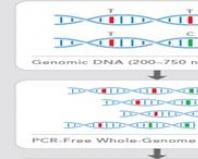Grasp the plug block. Rubber plug with grounding contact, angular. Types of plugs
If you believe the explanatory dictionary and Ozhegov’s dictionary, then a plug is nothing more than a plug, and this word has no other concept. So it turns out that a plug connection (as an example - a household pair “plug - socket”) can be called a fork connection. A plug is a switching plug that is inserted into a socket to create electrical contact between the electrical network and an electrical appliance. Plugs vary in both performance characteristics and configuration (see figure below). Household plugs are designed for a current of 10 or 6 amperes at a current of 220-250 volts. Below are the types of household plugs:
IN general concept, a plug is nothing more than a connector (electrical connector) with which electrical appliances are connected to the electrical network. And, in general, in colloquial speech A plug is a common socket or socket. The plug usually has two sockets and consists of a socket and a plug. All this together is called a plug connection. In turn, plug connections are already divided into mechanical and electronic, external and internal, etc. 
The manufacturer guarantees reliable operation plugs, provided that the consumer complies with the rules of transportation, storage, installation and operation.
Warranty period is 18 months.
Climatic modification - types climatic version machines, instruments and other technical products. In the territory Russian Federation defined in GOST 15150-69.
The letter part indicates the climate zone:
U - moderate climate (–45…+40 С°);
HL - cold climate(–60…+40 С°);
UHL - moderate and cold climate (–60…+40 C°);
T - tropical climate (+1…+40 C°);
M - maritime moderate-cold climate (–40…+40 C°);
О - general climatic version (except sea) (–60…+50 С°);
OM - general climatic marine version (–40…+45 С°);
B - all-climate version (–60…+50 C°).
The numeric part following the letter indicates the placement category:
1 - on outdoors;
2 - under a canopy or indoors, where conditions are the same as outdoors, except solar radiation, atmospheric precipitation;
3 - in indoors without artificial regulation climatic conditions;
4 - indoors with artificial regulation of climatic conditions (ventilation, heating);
5 - in rooms with high humidity, without artificial regulation of climatic conditions.
IP - degree of protection against dust and water, the higher the number, the higher the protection.
The first digit in the code indicates the degree of protection against exposure to solid objects different sizes, as well as the degree of protection against penetration into the housing.
0 - absence of any protection;
1 - protects against penetration of objects with a diameter of more than 50 mm (simply covers from contact with the electrically conductive part);
2 - protection from objects with a diameter of 12 mm or more (from fingers, branches, etc.);
3 - objects larger than 2.5 mm cannot penetrate (some tools, cables, etc.);
4 - only objects smaller than 1 mm can be hit (very small fasteners, thin wires etc.);
5 - complete protection from contact, dustproof shell (a small amount of dust can get inside, but it does not affect the work);
6 - the highest degree of protection from dust, dust-proof shell (even dust does not penetrate).
The second digit of the IP protection class shows how much the case protects the contents from moisture.
0 - no protection from moisture;
1 - vertically falling drops hitting the housing do not disrupt the operation of the device;
2 - if the housing is tilted at an angle of 15°, vertically falling drops do not disrupt the operation of the device;
3 - protection from splashes falling at an angle of up to 60° (from rain);
4 - splashes of water from any direction are not scary (can be placed in bathrooms at a distance of 20 cm from the water source and closer);
5 - the impact of water jets does not cause harm (any angle of inclination);
6 - the housing is able to withstand waves and jets of water (entered water does not interfere with the operation of the equipment);
7 - with a short-term immersion of 1 meter in water, the device continues to operate;
8 - if you stay at a depth of 1 meter for a long time, the device works;
9 - complete waterproofness, the device operates under water for a long time.
Hello, dear readers! Today I would like to talk about such an element as plug, what it is, what it consists of, types, and how to quickly fix it.
What is a plug
You all know very well and have seen the plug and probably understand what it is used for. How could you tell what a plug is? Do not know? So, a plug is an electrical connector. Together with the plug socket, they form a plug connection. They allow you to quickly connect and disconnect an electrical device using plug-in contacts.
Plug application
It is used to connect to the network household electrical appliances(single and three phase). Electrical appliances with a rated current of up to 10 A are connected to a network with a voltage of 220 V, and up to 25 A to a network with a voltage of 380 V.
Plug design
The design of the plug is quite simple. It consists of metal pins (the number of pins depends on phase voltage) and any dielectric material.
Types of plugs
I would like to draw special attention to the types of plugs. There are several types, depending on the contact pins:
- Plug with roll pins that are used with hose wire;
- Flat pin fork. This type of plug is used for low voltage networks.
They also differ depending on the presence of insulation on the contact pins:
- Fork with non-insulated pins;
- A fork with pins insulated for 1/4 of the length, usually a cast body.
Finally, depending on the presence of grounding contacts, there are:
- Plug without ground contacts;
- Plug with side spring and flat grounding contacts.
A plug with flat contacts, most likely made abroad. A domestic plug may not fit into a European socket, so check ahead of time whether the plug fits into the socket and if not, purchase a special adapter. There is one more nuance, also check whether the plug fits the adapter.
Before installing the plug, it must be disassembled. First, rings are made on the wires, then they are connected to the pins of the plug. The pins must be exactly in place after assembling the plug. Some plug models have special brackets to secure the wires.
You can glean a lot of other useful and necessary information from the articles on the pages of my website; you can see the names of the articles at
Leave comments, all the best.
The electrical outlet is used to connect portable lighting or connecting cords of various types using plugs. electrical appliances. Electrical sockets and plugs for connecting to electrical networks household appliances constitute a group of products called electrical connectors (formerly called plug connectors). Plug sockets are installed at a height of 50...90 cm from the floor. DO NOT place sockets near grounded water supply or gas pipes, batteries central heating, sinks, gas and electric stoves. Sockets must be located at least 50 cm from these devices. There are electrical sockets for external and internal wiring. Plug sockets are made of porcelain or plastic. An electrical outlet usually contains two sockets for plug legs, holes for screws and screws with a nut for fastening the cover. The inter-socket distance in electrical sockets is usually 19 mm. Some outlet designs have fuse clips. The electrical wiring cord, during electrical installation, suitable for the plug socket, is sealed with loops and connected to the corresponding contacts with screws. At open wiring, the socket is secured with two screws on a wooden socket mounted on the wall of the apartment (Fig. 1.65). In the case of internal wiring, plug sockets are mounted in metal or plastic boxes. The socket is closed with a porcelain or plastic cover and screwed in with a screw. The socket cover has two, and sometimes three holes through which the plug legs are inserted into the sockets.
If there are small children in the house, then to prevent them from accidentally touching the sockets of the socket, you should make a safe socket. To install such an outlet, take a small circle of plywood or plastic with two holes for the plug (Fig. 1.66). The screw securing the socket body to the fittings is carefully unscrewed, passed through the hole in the mug and the screw is screwed in again. The force of pressing the screw head against the circle should be such that it rotates with little friction. When the socket is not in use, the circle is turned until the socket holes are closed.
Every electrical appliance starts with electrical plug or just plugs. There are collapsible and non-removable plugs (Fig. 1.67). One of the designs of a collapsible plug consists of contact legs, which are fixed in a plastic case (Fig. 1.68). The body consists of two halves, fastened with a screw and nut. Part of the length of the contact legs of the plug with wires attached to them is fixed inside the housing.
Rice. 1.65. Fastening plug socket open wiring
.jpg)
Rice. 1.66. Design of a safe socket: 1 - holes in the socket; 2 - holes for plug; 3 - circle; 4 - screw
.jpg)
Rice. 1.67. General form some types of collapsible (a, b) and non-removable (c) forks
.jpg)
Rice. 1.68. The device of a collapsible fork: 1 - body; 2 — contact legs; 3 - wire; 4 - screws securing the ends of the wire to the contact legs, 5 - screw securing the housing halves
Replacing the plug
Replacing the plug on the cord or installing the plug is done as follows (Fig. 1.69).
1. First, use a knife to strip the ends of the wire going to the plug, solder them and make rings.
2. Unscrew the screws on the contact legs of the plug.
3. Screw the ends of the wire, sealed with a ring, to the contact legs of the plug.
.jpg)
Rice. 1.69. Technology for connecting the electrical cord to the plug: 1 - screws of the plug legs; 2 — contact legs; 3 - bracket; 4 — half of the body with depressions (base), 5 — half of the body; 6 — screw and nut securing the housing halves
4. Unscrew one screw of the bracket attached to one half of the case and move the bracket to the side.
5. Insert the housing halves with the bracket into the recesses, and the ends of the wire with the contact legs, turn the bracket and press the wire with it. Screw the screw into the hole in the bracket.
6. Cover the assembled part of the plug with the other half of the housing, insert a screw into the hole in the housing and twist it on the other side of the housing with a nut.
Replacing a permanent plug
Permanent plugs are an electrical cord made of rubber or plastic, which is molded together with the plug. If a permanent plug fails, do this. The unusable plug is cut off, and the connecting ends of the cord, after being sealed with a loop, are attached to a dismountable plug according to the above method.
Repairing a broken cord
If for some reason an electrical appliance plugged into an outlet does not work, then first of all you should check whether the cord is damaged. What is the easiest way to find where the cord breaks? You need to bend the wire along its entire length. At the break point, the wire has less resistance. If only one wire of a two-conductor patch cord is broken and that location is closest to the plug, the easiest way is to cut the second wire at the same location and attach the plug to the shortened cord. If the cord is broken in the middle, then you need to strip only one wire of insulation and try to connect it. If this cannot be done, then cut the second wire, and then connect both wires of the cord.
Concise Encyclopedia household. - M.: Great Soviet Encyclopedia. Ed. A. F. Akhabadze, A. L. Grekulova. 1976 .
See what “PLUG” is in other dictionaries:
plug- - [Ya.N.Luginsky, M.S.Fezi Zhilinskaya, Yu.S.Kabirov. English-Russian dictionary of electrical engineering and power engineering, Moscow, 1999] Topics of electrical engineering, basic concepts EN male plugpin plugwall plug ... Technical Translator's Guide
FORK- FORK, forks, women. 1. Item from cutlery in the form of a handle with two, three or four teeth, with which pieces of food are taken and placed in the mouth. 2. B various areas equipment, a tool, device or some kind of device in the form of a pitchfork, with... ... Dictionary Ushakova
FORK- FORK, and, genus. pl. lock, female 1. A piece of cutlery with sharp teeth on a long handle. Silver, cupronickel c. V. on a metal, wooden, bone handle. V. with two, three, four teeth. Lift the meat onto a fork. Knife with... ... Ozhegov's Explanatory Dictionary
fork- And; pl. genus. lok, dat. lkam; and. 1. One of the pieces of cutlery with sharp long teeth and a handle, which is used to pick up pieces of food. Silver, cupronickel c. Use a fork to pry the mushroom onto the fork. 2. Name of various devices, devices with... ... encyclopedic Dictionary
fork- And; pl. genus. lok, dat. lkam; and. see also fork, fork 1) One of the pieces of cutlery with sharp long teeth and a handle, with which pieces of food are taken. Silver, cupronickel violet. Use a fork to pry the mushroom onto the fork. 2) Names of various... Dictionary of many expressions
Socket (plug box)- type F socket The socket is the female part of the connector (“female”), most often intended for permanent installation. The mating part of the connector (pin, “male”) is called a plug. Contents 1 Power sockets ... Wikipedia
VS- mine trolley vertical hinge plug plug viscose silk fibrous slag concrete high school... Dictionary of Russian abbreviations
VS- viscose silk VSh higher school education and science Dictionary: S. Fadeev. Dictionary of abbreviations of the modern Russian language. St. Petersburg: Politekhnika, 1997. 527 p. VS ventilation shaft, for example, metro... Dictionary of abbreviations and abbreviations
AC power plugs and sockets- This article is about the design, technical features and the history of the development of plug connectors. About standards for plug connectors adopted in different countries see List of plug connector standards... Wikipedia
GOST R IEC 60598-1-2003: Lamps. Part 1. General requirements and test methods- Terminology GOST R IEC 60598 1 2003: Lamps. Part 1. General requirements and test methods original document: 1.2.6. basic luminaire: A luminaire consisting of a minimum set of parts that can meet the requirements ... Dictionary-reference book of terms of normative and technical documentation




